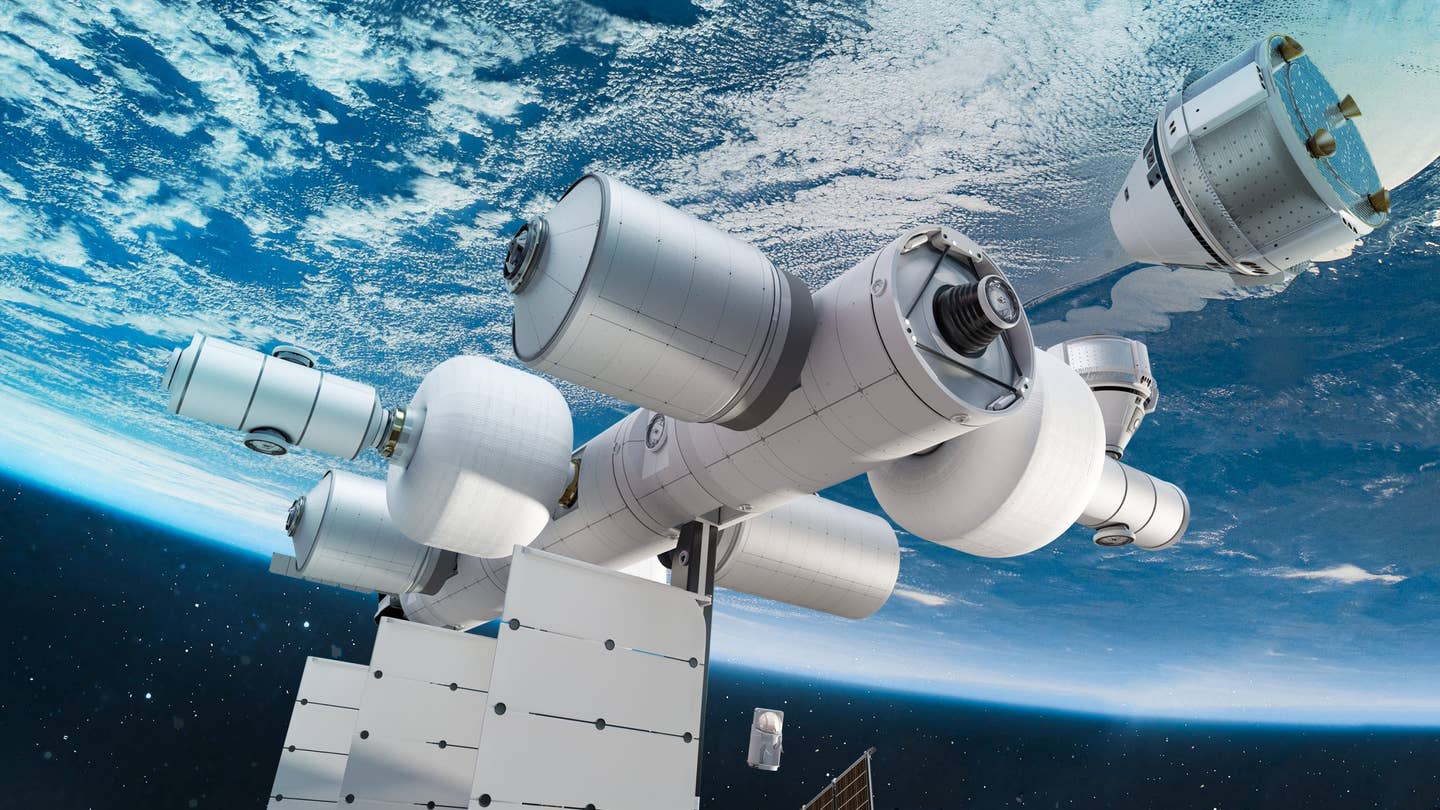NASA Picks Orbital Reef to Develop New Space Station
The goal is to create a commercial space station to replace the International Space Station by 2030.

The goal of Orbital Reef is to create a “mixed-use business park” in space. Credit: Blue Origin
NASA has selected Orbital Reef as the successor to the International Space Station (ISS).
Jeff Bezos’ Blue Origin, alongside Sierra Space, were picked by NASA to design a commercially owned and operated space station in low-Earth orbit (LEO). The move, announced Thursday, comes as NASA hopes to stimulate research and exploration before the retirement of the ISS, expected in 2030.
Boeing, Redwire Space, Genesis Engineering Solutions, and Arizona State University will all be included on the Orbital Reef team.
“We are pleased that NASA supports the development of Orbital Reef, a revolutionary approach to making Earth orbit more accessible to diverse customers and industries,” said Brent Sherwood, senior vice president of advanced development programs for Blue Origin, in a statement.
“In addition to meeting the ISS partners’ needs, the Orbital Reef mixed-use space business park will offer reduced costs and complexity, turnkey services, and inspiring space architecture to support any business. No one knows how commercial LEO markets will develop, but we intend to find out.”
Orbital Reef will operate as a “mixed-used business park” that will provide the first opportunity to visit space for smaller countries, companies, and organizations.
How the Team Will Work
Each member of the Orbital Reef team will have a substantial role to play in its development.
Blue Origin will lead the design of the station’s infrastructure, modules, space tug, and reusable New Glenn Launch system.
Genesis is developing the first suitless, single-person spacecraft for extravehicular activity, whose application won’t be limited to just Orbital Reef.
“Until now, excursions outside spacecraft have required the challenge, inconvenience, risk, and expense of spacesuits. Orbital Reef changes that with the Single Person Spacecraft, an efficient and tourist-safe alternative,” said Brand Griffin, program manager for Genesis Engineering Solutions, in a statement.
Sierra Space will develop the Large Integrated Flexible Environment (LIFE), small-diameter modules, as well as the Dream Chaser spaceplane for crew and cargo.
“Blue Origin and Sierra Space are proud to be awarded the NASA Commercial Destination Free Flyer program,” said Tom Vice, CEO of Sierra Space, in a statement. “Blue Origin and Sierra Space are committed to the realization of our vision of enabling humanity to build civilizations in space while enhancing life here on Earth. The commercialization of low Earth orbit is an important first step in this journey. We look forward to working with NASA on this important program that will advance humanity’s settlement of space.”
Boeing will lead the station’s operations, maintenance, science module, and Starliner crew capsule.
“This award shows NASA’s foresight in prepping a commercial space station in the future that will be worthy of the legacy of the International Space Station,” said Boeing’s John Mulholland, vice president and program manager of the International Space Station in a statement.
“Orbital Reef will continue to expand access to space research capabilities to groups that have not been able to utilize the microgravity environment. We are excited about applying more than two decades’ worth of expertise in the ISS operations to make the Orbital Reef a landmark success in orbit.”
Redwire Space will lead microgravity research payload development, operations, large deployable structures, and the digital twin of the Orbital Reef. Redwire previously partnered with NASA for the Double Asteroid Redirection Test (DART).
“NASA’s support for Orbital Reef represents a strong commitment by the Agency to leverage an innovative public private partnership ensuring that America and its international partners maintain a continuous human presence in LEO,” said Mike Gold, Redwire’s executive vice president of civil space and external affairs, in a statement.
“At Redwire, we are excited to transform the dream of Orbital Reef into reality via our innovative technologies, such as Roll Out Solar Arrays, digital engineering, and internal outfitting for scientific and commercial activities.
The trailblazing microgravity research, development, and next-generation manufacturing that we conduct on Orbital Reef will not only enable future exploration missions to the Moon, Mars, and beyond, but will also substantively improve life here on Earth.”
Arizona State University will be the liaison between Orbital Reef and 14 different universities around the world, opening up educational institutions to microgravity research capabilities.
According to Blue Origin, Orbital Reef will act as an “address in orbit for anyone” and will grow as different industries take interest in the station—to include entertainment, sports, gaming, and tourism.

Sign-up for newsletters & special offers!
Get the latest FLYING stories & special offers delivered directly to your inbox






